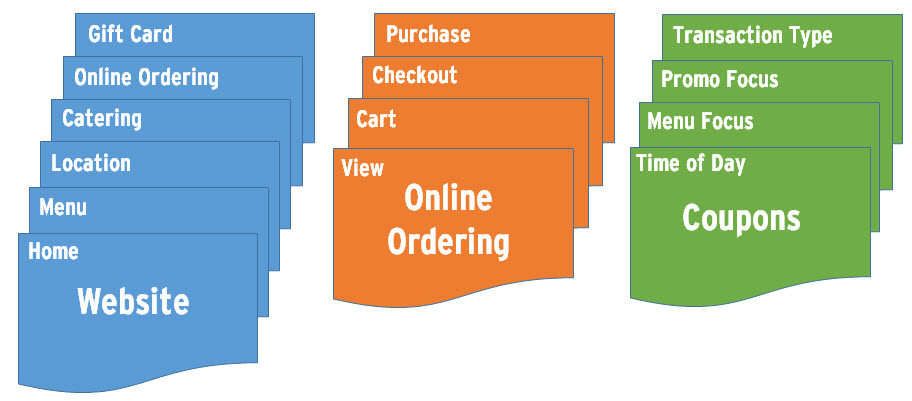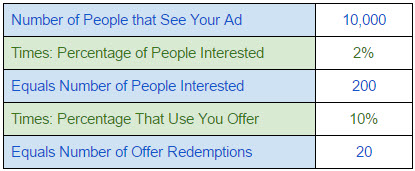This is the fourth post in a comprehensive series on How to advertise your restaurant on Facebook – Custom Audiences .
For Chains with Hundreds of Locations to Single Unit restaurants – This series will change the way you advertise.
Part 1: How to advertise on Facebook – Building Your Custom Audiences
Part 2: How to advertise on Facebook – Audience Insights – Understanding Who Are Your Ideal Customers
Part 3: How to advertise on Facebook – Lookalike Audiences – Targeting Similar Customers
Part 4: How to advertise on Facebook – Custom Audiences – Targeting Specific Interest
Part 5: How to advertise on Facebook – Custom Audiences – Remarketing
Part 6: How to advertise on Facebook – Addressing Your Biggest Digital Advertising Challenges
Getting great advertising results boils down to targeting the right audience with the right message at the right time.

In Part 1: How to advertise on Facebook – Building Your Custom Audiences we detailed how to build your custom audiences in Facebook to understand who are your customers and who are the people that are interested in eating at your restaurant but have not visited yet.
In Part 2 We looked at how to use Facebook Audience Insights to analyze your current customers and interested prospects to identify who are your ideal customers and develop buyer personas.
In Part 3: How to advertise on Facebook – Lookalike Audiences – Targeting Similar Customers we looked at how to use lookalike audiences to target new customers with Facebook Ads.
In Part 4: How to advertise on Facebook – Custom Audiences – Targeting Specific Interest we will look at how to segment your current customers even further to create targeted Facebook Ads to smaller audiences with specific interests.
In Part 1 Building Your Custom Audiences you saw how you can create custom audiences by tracking customer visits to specific website pages.
Below is an image of typical online restaurant websites or venues where you can target people that visit specific pages on these sites.

Tracking website visits is relatively easy since most restaurants control their website and can have the Facebook Ad tracking pixel installed for them on their web pages.
Online ordering is typically handled by a third party online ordering provider. You will need to ask your online ordering provider to add your Facebook Ad pixel to the pages associated with your restaurant.
In both cases segmenting your audience depends on the page organization of your website and online ordering and ensuring the Facebook ad pixel is installed on every page.
For example, to know a customer was specifically interested in Gift Cards or Catering requires that there be a webpage dedicated to that service. Facebook is able to segment a custom audience based on keywords found in the URL. To target the visitors interested in catering you will create a custom audience by specifying the URL contains the keyword “catering”.
For online ordering Facebook provides special tracking codes that can be added to the online ordering buying process (typically view, add to cart, checkout, purchase). With ad tracking pixels through to the purchase phase of the buying process, you can identify all of the people that have completed an online order.
The Data Power of Coupons
An overlooked tracking opportunity for restaurants are digital coupons. It is very typical for restaurants to use coupons in their email marketing or to post coupon offers on Facebook, Twitter, or their website.
Coupons are used as an incentive to drive more business with current customers or to incent new customers to try your restaurant. The overall goal is increased revenue.
But the areas of revenue you may want to increase will vary based on your business. The following are some of the ways restaurants may want target a coupon promotion to increase revenue:
- Type of transaction – catering, delivery, online ordering, dine-in, carry-out
- Time of day – Breakfast, Lunch, Dinner, Late Night
- Day of the Week – Mon, Tue, Wed, Thu, Fri, Sat, Sun
- Promotion Focus – Happy Hour, Kids, Early Bird, Catering, Buffet
- Menu Focus – Entree, Dessert, Appetizer, New Item
- Location – Specific location, city, metro area, state, region
Categorizing Coupons for Tracking
If you categorize your coupon offers by the type of coupon offer and track the clicks using the Facebook Ad pixel you now have the ability to identify custom audiences based on the coupon offer that interested them. And by tracking the coupon through to redemption you can identify the customers that stopped in to use a targeted offer.
Categorize coupon offers by what makes sense for your restaurant. When you create the coupon categorize the coupon based on the revenue goal. For example, your may want to increase your Lunch Buffet business. By categorizing the coupon as a buffet offer you can use the Facebook Ad pixel and custom audiences to identify everyone interested in your buffet.
The Advertising Power of Coupons
In every part of the Restaurant Facebook Advertising series you see the following:
Getting great advertising results boils down to targeting the right audience with the right message at the right time.
By categorizing coupons you can now target a specific audience with a targeted message at the right time.
Driving Revenue NOW
If you want to drive immediate revenue then your best targeted audience are current customers that have redeemed a similar coupon offer in the past.
Keep in mind that Facebook keeps people in custom audiences that have clicked in the past six months. After six months they are no longer included in the custom audience. This keeps your customer audiences fresh and current. No need to worry about stale lists.
Using coupon categories you can create custom audiences of customers that have specific interest in your current promotional offer. Just target those customers that have redeemed a similar offer in the past.
These custom audiences may be relatively small audiences. What that means is you can dramatically lower your ad spend to get your advertisement in front of this smaller audience.
If your redeemed coupon audience is extremely small consider also targeting people that have clicked on similar coupons but did not redeem. You will see in an analysis below that for every ten people that click on a coupon on average only one of those people will stop in and redeem it.
Since your customer has used or looked at similar coupon offers in the past you can expect a higher click through rate, higher redemption percentages, and higher Facebook ad relevance scores.
Driving Revenue from New Customers
In part 3 we discussed how to use Lookalike audiences to create an audience that is similar for targeting purposes. You can now create your lookalike audience based on the type of promotions customers and potential customers have shown an interest in.
To target only new customers first create your ad set and target your lookalike audience you built with a specific interest in the type of promotion you are running. Then be sure to exclude current customers from seeing the ad by using the audience exclusion feature.
Once again, with specific interest targeting your audience will be much smaller but your ad should deliver higher click throughs, higher redemption rates, and higher relevance scores.
Spend Much Less on Advertising and Get Better Results
The mathematics of advertising have not changed for 100 years. It’s the same math no matter what the advertising medium. Here’s the formula:

There’s are only a couple of ways to improve the results. They are:
- The better you have targeted your ad to the right audience the higher the percentage of people that will be interested. Highly targeted ads can push 4 to 5% click-throughs of the people interested in the offer.
- The stronger the offer the more likely people will use stop in to use the offer. An average offer will see a 10% redemption where stronger offers may double that. Believe it or not, but Free will still bring in less than half of the people interested.
Print Coupon Flyers, Coupon Mailers & Postcards
Many restaurants use print coupon flyers, coupon mailers, or postcards They can still be effective advertising mediums. If you track your results you will find that the results track closely to the formula outlined above.
The challenge with print mediums is there is no way to identify over time the people that are interested in your offer. And generally there is no way of excluding specific households from receiving your advertisement. After all, your intent is to find new customers and not provide discounts to current customers.
Wouldn’t it great to tell your print vendor:
- To only send your ad to the most likely target audience in a particular geographic area.
- After you send the offer several times you would like to pay only to send the flyer to the people that have been looking at your offer with the intent to perhaps stop in and use it.
- Please exclude your current customers from receiving the ad.
If you could do that you could dramatically reduce costs and get the same results.
Facebook Ads with Coupons
I think by now you can see how website tracking and Facebook ads your wishes come true.
Here’s what you can do with Facebook ads with coupons.
- Use your highly targeted custom audiences for your ads in your local geographies. No need to advertise to everyone in the local area, just the most likely buyers.
- Using the Facebook Ad pixel you can identify the people that have clicked on the coupon and shown an interest. Once they click you can move the customer to the interested audience. The next time you advertise you can target just the “interested audience”.
- You can exclude your current customers from seeing the offer.
With Facebook ads and tracking you are continually refining your target audiences so you can get smarter over time with your advertising dollars.
Basically better target audiences will translate into a lower ad spend with better results.
Restaurant Owners with One to Three Locations
Single unit restaurants or small chains can use many of the techniques described above but use broader categories. With Facebook tracking you will be able to identify three audiences in your local market: current customers, interested customers, and new customers. This will allow you to narrow the audience you advertise to and get better returns on your advertising dollars.
Large Chains
Chains with 25+ locations will typically have thousands of people represented in each custom audience. By tracking categorized coupon offers you will be able to create multiple target audiences with specific interests. You will be able to create targeted ads to customers with specific interests across all of your locations or in specific geographies.
| You can download all six parts of the 41-page Restaurant Facebook Advertising Guide by Clicking Here |
Coming Up in the Next Post
In Part 5: How to advertise on Facebook – Custom Audiences – Remarketing we will look at how to use the advertising technique named Remargeting which is commonly used in retail.
